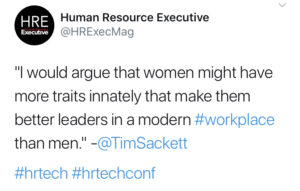I’m out at Workday Rising this week in Orlando and yesterday I got the pleasure of listening to Lin-Manuel Miranda speak for the morning keynote. For those who follow me socially, I’ve seen Hamilton the musical four times (almost a 5th, but I got swindled!). So, I’m a bit of a super fan! Hamilton tickets aren’t cheap, it’s an investment to be a fan!
Miranda’s first big break was one he created himself when he wrote his first musical called “In the Heights“. Lin-Manuel is a Puerto Rican-American and in musical theater, there were basically almost zero rolls, so if he wanted to do musical theater he felt he needed to write his own role, so he did. It was successful, which led to other opportunities and to him being able to develop Hamilton.
The advice so many of us need, but it’s super hard to accept is that many times to be successful, or chance your dreams, you have to create your own opportunities to make that happen.
Especially, if you don’t have the same privilege as others trying to do what you’re doing. My mom started her own company because she was sick of outperforming dudes in the same company and not getting the recognition. Miranda wrote his own roles, not thinking it would be ‘broadway’ successful, but that it was something he could perform locally and show people his abilities and that would lead him on his path.
It would be easy to say he was lucky with In the Heights, but it’s not really luck, he’s truly a genius when it comes to musical theater. He created his own luck by putting in years of work creating something that was perfect for him. It’s a great reminder for any of us who are feeling that there just isn’t the ‘perfect’ opportunity for you in the world.
My favorite quotes and ideas from Lin-Manuel Miranda’s keynote:
- He came out on stage at a giant technology conference and said, “I feel like I’m launching Windows 95!” which drew huge laughter from the crowd.
- When asked if he accepted the offer to do the Mary Poppins movie immediately he said, “NO! I had to go ask my wife!” And explained when you have a partnership you have to discuss these types of things because it has a huge impact on the other person, on your life, even if it’s a dream come true. (he seems super grounded!)
- Hamilton musical stuff:
- Burr came from a privileged background, a famous grandfather, father was the president of Princeton, he had so much to lose by saying or doing the wrong thing, and this shaped his decision making. Hamilton came from nothing and had nothing to lose. This clearly shaped his behavior and decisions and gave his enemies much to use against him, but he had nothing to lose, in the beginning. Imagine if we all went through life as if we had nothing to lose? What could we accomplish?
- When you get criticism, and Lin-Manuel as an artist gets a lot of it, it’s important to understand the point of view from where it’s coming. Then, you can make the decision, do I accept that and change, or do I go back and try to change them.
- “The best idea always wins” – Miranda talking about his writing and production process with his team.
- “The teller changes the story” – Each person who tells a story will change it slightly based on their perspective. In HR we see this all the time as we get multiple sides of issues in our environments.
- The interview asked Hamilton how he decided to use all minorities in the cast of Hamilton. He said if I made a hip hop founding father story and used all white dudes, you would have thought I messed up! We do Shakespeare and we constantly change the characters to whatever and it’s accepted, why can’t we do that with the founding fathers? It doesn’t change the story.
- How did he come up with doing a Hip Hop version of the founding fathers? Hamilton’s story is a perfect hip hop/rap story. He came from nothing. Had huge bravado. Rose up to be powerful and wealthy. Got into a gun battle. Sounds like hip hop!
More to come tomorrow on my breakdown of Workday Rising specifically! But I had to write about Lin-Manual Miranda!

